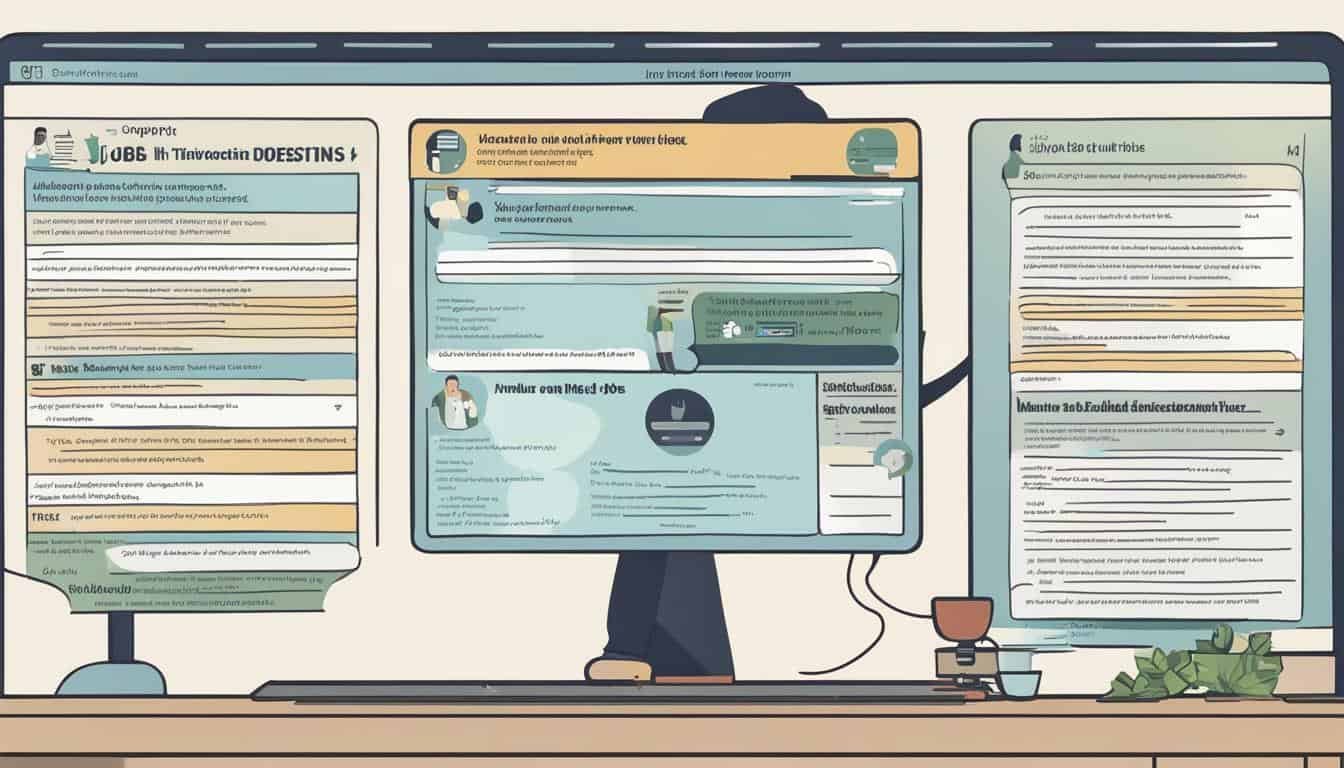Introduction to UI/UX Design
In the digital era, where user interactions with technology are more prevalent than ever, the role of a UI/UX designer has become vital.
UI/UX design refers to the process of creating user interfaces and experiences that are both visually appealing and intuitive.
It involves understanding user behaviors, needs, and preferences to design interfaces that facilitate smooth and enjoyable interactions.
The Role of a UI/UX Designer
A UI/UX designer plays a crucial role in shaping the overall experience users have with digital products, websites, and applications.
They collaborate with cross-functional teams, including developers and stakeholders, to create designs that align with business objectives and user expectations.
A UI/UX designer combines aesthetics, usability, and functionality to deliver engaging and user-centered experiences.
Understanding User Experience (UX)
Defining UX
User Experience (UX) encompasses the overall perception and emotions users experience when interacting with a product or service.
It involves various aspects, such as ease of use, efficiency, satisfaction, and the emotional response evoked by the design.
A successful UX design focuses on creating positive experiences that meet user needs and exceed their expectations.
Importance of UX in Design
A well-crafted user experience is essential for any digital product or service to succeed.
Users are more likely to engage with and return to products that offer a seamless and enjoyable experience.
UX design enhances customer satisfaction, encourages user loyalty, and can differentiate a business from its competitors.
Understanding User Interface (UI)
Defining UI
User Interface (UI) refers to the visual elements, interactive components, and overall presentation of a digital product.
It encompasses the layout, typography, color schemes, icons, and other visual elements that users interact with.
A well-designed UI focuses on creating intuitive and visually appealing interfaces that guide users through their interactions.
Importance of UI in Design
While UX focuses on the overall user experience, UI plays a crucial role in shaping users’ first impressions and interactions with a product.
A well-designed UI enhances usability, establishes brand identity, and contributes to a positive user experience.
It ensures that users can easily navigate and interact with the product’s features, leading to increased engagement and satisfaction.
UI/UX Design Process
The UI/UX design process involves several stages that enable designers to create effective and user-centered designs.
These stages typically include research and analysis, wireframing and prototyping, visual design, and testing and iteration.
Research and Analysis
During the research and analysis phase, UI/UX designers gather insights into user behaviors, preferences, and needs.
They conduct user research, analyze competitor products, and define user personas to inform their design decisions.
This stage helps designers understand the target audience and identify key design requirements.
Wireframing and Prototyping
Wireframing and prototyping allow designers to create low-fidelity representations of the user interface.
Wireframes outline the basic structure and layout of a design, while prototypes provide interactive experiences that simulate user interactions.
These tools help designers refine their ideas, test different approaches, and gather feedback from stakeholders and users.
Visual Design
The visual design phase focuses on creating an appealing and aesthetically pleasing interface. Designers select color palettes, typography, imagery, and other visual elements to create a cohesive and visually engaging design.
They also consider accessibility guidelines and ensure the design is compatible with different devices and screen sizes.
Testing and Iteration
Testing and iteration are integral to the UI/UX design process.
Designers conduct usability tests, gather user feedback, and iterate on their designs based on the insights gained.
This iterative approach helps refine the design and ensures it meets user needs and expectations.
UI/UX Design Principles
To create effective UI/UX designs, designers follow certain principles that guide their decision-making process. These principles include:
Consistency and Clarity
Maintaining consistency throughout the design ensures that users can easily navigate and understand the interface.
Consistent use of visual elements, such as buttons, icons, and typography, establishes familiarity and reduces cognitive load.
User-Friendly Navigation
Intuitive navigation is crucial for a positive user experience.
Designers prioritize clear and logical navigation structures that allow users to easily move through different sections of the interface and find the information or functionality they need.
Visual Hierarchy
Visual hierarchy helps users prioritize and understand the importance of different elements within the interface.
By using visual cues such as size, color, and placement, designers create a clear hierarchy that guides users’ attention and actions.
Responsiveness and Adaptability
In the era of multiple devices and screen sizes, UI/UX designs must be responsive and adaptable. Designers ensure that the interface adjusts seamlessly to different screen sizes, maintaining usability and visual integrity.
Accessibility
UI/UX designers consider accessibility guidelines to ensure that their designs are inclusive and can be used by individuals with disabilities.
They prioritize features such as alternative text for images, keyboard accessibility, and clear contrast between text and background.
The Impact of UI/UX Design on Businesses
Effective UI/UX design can have a significant impact on businesses. Here are some key benefits:
Improved User Satisfaction
By prioritizing user needs and creating intuitive designs, businesses can enhance user satisfaction. Satisfied users are more likely to engage with a product or service, recommend it to others, and become loyal customers.
Increased Conversion Rates
Well-designed UI/UX can lead to increased conversion rates.
A seamless and enjoyable user experience encourages users to complete desired actions, such as making a purchase, signing up for a service, or sharing their contact information.
Enhanced Brand Reputation
A well-designed user interface and experience contribute to a positive brand reputation.
Businesses that invest in UI/UX design demonstrate a commitment to quality and user-centricity, which can improve brand perception and attract more customers.
The Future of UI/UX Design
UI/UX design continues to evolve as technology advances and user expectations change. Here are some trends shaping the future of UI/UX design:
Evolving Technologies
Emerging technologies, such as augmented reality (AR), virtual reality (VR), and voice interfaces, present new opportunities for UI/UX designers.
Designers will need to adapt and explore innovative ways to create engaging and immersive user experiences.
Personalized User Experiences
Personalization is becoming increasingly important in UI/UX design.
Designers will focus on creating personalized experiences based on user preferences, behavior, and context.
This will involve leveraging data and AI-driven algorithms to deliver tailored interfaces and content.
Voice and Gesture Interfaces
As voice assistants and gesture-based interactions become more prevalent, designers will need to design interfaces that seamlessly integrate these technologies.
Voice interfaces require different considerations, such as voice recognition and natural language processing, to create intuitive and user-friendly experiences.
Conclusion
UI/UX design plays a critical role in creating user-centered and engaging digital experiences.
By understanding user needs, leveraging design principles, and staying abreast of emerging trends, UI/UX designers can continue to shape the future of digital interactions.
Investing in quality UI/UX design can lead to improved user satisfaction, increased conversions, and enhanced brand reputation.
If you are interested in other No Coding Jobs check out our post on High-Paying Tech Jobs Without Coding in 2023
FAQs (Frequently Asked Questions)
1. What is the difference between UI and UX design? UI design focuses on the visual elements and presentation of a digital product, while UX design encompasses the overall user experience, including usability, satisfaction, and emotional response.
2. How does UI/UX design impact business success? UI/UX design can improve user satisfaction, increase conversion rates, and enhance brand reputation, ultimately contributing to business success.
3. What is the UI/UX design process? The UI/UX design process typically involves research and analysis, wireframing and prototyping, visual design, and testing and iteration.
4. What are some key UI/UX design principles? UI/UX design principles include consistency and clarity, user-friendly navigation, visual hierarchy, responsiveness and adaptability, and accessibility.
5. What are the future trends in UI/UX design? The future of UI/UX design involves evolving technologies like AR, VR, and voice interfaces, as well as a focus on personalized user experiences and seamless integration of voice and gesture interfaces.




0 Comments